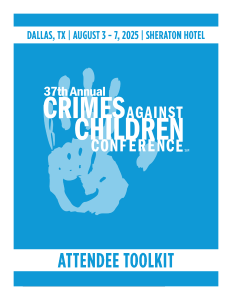Workshop
Sheraton Conference Center - 3rd Floor
Forced Criminality: The Trafficker’s “Perfect Plan” to Avoid Accountability (en español)
Tuesday, August 5, 2025
12:00 PM – 1:15 PM CT
Location: San Antonio B
Earn 1.25 Credit Hours
Target Audience: Law Enforcement, Prosecutor, Forensic Interviewer, CPS, CAC
- GS
Gigi M. Scoles (she/her/hers)
Attorney Advisor
AEquitas .jpg)
Lou Longhitano
Attorney Advisor
AEquitas
Primary Presenter(s)
Co-Presenter(s)
While awareness of human trafficking is on the rise, there are still blind spots that prevent law enforcement from recognizing all forms of exploitation. The intersection between sex trafficking, labor trafficking, and forced criminality is often overlooked because it challenges law enforcement and prosecutors to look deeper at circumstances where victims can initially look like criminals. Those with lived experience share that traffickers use forced criminality in nearly all trafficking operations. Forcing victims to commit crimes is common because it is an incredibly effective way for traffickers to escape accountability by silencing and scapegoating their victims.
The presenters will use case examples as a backdrop to discuss the realities of forced criminality in the context of both sex trafficking and labor trafficking. The presentation will include information about how traffickers use grooming tactics common in both child sexual abuse cases and gang culture to recruit and coerce victims to commit crimes. Strategies to better identify and respond to cases of forced criminality will be discussed, including implementing policies and practices designed to avoid the inappropriate punishment of victims.
The presenters will use case examples as a backdrop to discuss the realities of forced criminality in the context of both sex trafficking and labor trafficking. The presentation will include information about how traffickers use grooming tactics common in both child sexual abuse cases and gang culture to recruit and coerce victims to commit crimes. Strategies to better identify and respond to cases of forced criminality will be discussed, including implementing policies and practices designed to avoid the inappropriate punishment of victims.
Learning Objectives:
- Recognize and describe methods traffickers use to identify, recruit, and coerce victims of forced criminality
- Conduct trauma-informed and age-appropriate investigations and prosecutions in cases where victims of sexual and labor trafficking have been forced to commit crimes
- Screen for forced criminality

